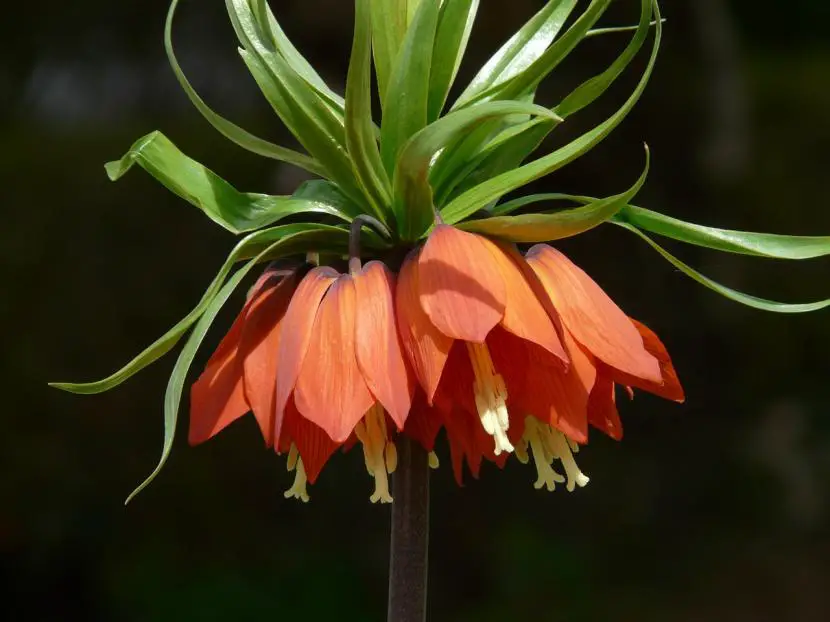
Imperial fritillaria
Today I am going to introduce you to some spectacular bulbous plants: the Fritillaria. They are one of the most exceptional due to the striking colors and shapes of their flowers, which you can even use as a cut flower to decorate the dining room table or the hall furniture. This way you will get a different touch to the room, and surely whoever sees it will love it.
Do you want to know how to take care of it?

Fritillaria meleagris
Plants of the genus Fritillaria originate from Turkey, even through the Himalayas, although it is currently cultivated around the globe. They have a rather reduced height, about 50cm, except for the F. imperialis which can reach one meter in height. Even so, all of them are ideal to have in pots which will have to have a depth of about 40cm. But if you want to have it in the garden, you can plant its bulbs in summer in the shade of bushes or trees at a depth of about four inches.
The most suitable substrate for it will be the one that does not retain much moisture. A mix to use would be: 40% vermiculite, 30% perlite, 20% black peat and 10% worm castings. To plant in soil it will be enough to mix the garden soil with perlite or any other similar material (such as volcanic clay or clay balls for gardening).

Fritillaria michailovskyi
As they are very sensitive to excess watering, we will have to water occasionallyonly when we see that the substrate is dry. Depending on the weather and location, we will water about twice a week.
One feature that I am sure you will like is the following: easily reproduces on its own. In fact, each season of the bulb that we have planted, new “bulbs” will come out, which we can separate and plant in individual pots, in another area of the garden or give them to your friends. Interesting, right?
What did you think of the Fritillaria? Did you know her?

